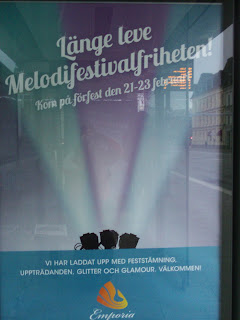- Semlor don't really stick out at first. There's nothing crazy about them. They're nice looking pastries, often presented in an appealing manner. Many Swedes don't try to stick out and have a nice, modern sense of style, too.
- Semlor look unassuming. You don't think there's anything incredible about them at first glance. You expect a good pastry, but you don't think there's anything more to it than that. And maybe, you might even think semlor are slightly boring. A little sugar, bread, and whipped cream. Ok. Nothing special. Sometimes, when people go to Sweden or meet Swedes, they come away thinking Swedes are unassuming and maybe a bit boring, too.
- Semlor are only available under certain conditions, like the time of the year. Like a semla, many Swedes are open to conversation only under certain conditions. You don't usually strike up a conversation in an elevator or on the street. That would be a bit awkward and strange, which leads tourists and foreigners to think Swedes are cold and aloof. There's a joke in Sweden about people smiling at you on the street. If you encounter someone who smiles at you, they're either one of two things - drunk or American. There are proper times to socialize and improper times. If you schedule a get-together where people are expected to socialize and chat, you'll find people in Sweden to be open and caring, genuine and funny.
- Semlor have a surprise inside. You think the semla is boring and typical at first glance. That's because you can only see the surface. If you go deeper, you'll find the best part is at the heart of the semla - a sweet mix of sugar and almonds blended together, creating a unique and unforgettable flavor. Swedish culture is a bit like that too. At the heart of it, the culture is full of warmth, care, laughter, and humor with a unique flavor all its own. You just have to get past the outside to see it, which can sometimes be a little tricky.
- Semlor and coffee are a match made in heaven. I don't drink much coffee, but I've been told the two make a perfect fit - just like Swedes and their coffee. Coffee looms large in the culture, as does the coffee break, otherwise known as "Fika". Sitting down with a semla and a cup of java gives you an opportunity to socialize and chat with those around you - a good way to get to the heart of a Swede.
- Semlor are unique. Yes, there are similar pastries in other parts of the world. Estonia, Finland, and Denmark even have variations of the semla. But, no one makes a semla, or celebrates it, like the Swedes. Just like the pastry, Swedes and Swedish culture is unique. The country and culture has its own style and ways of seeing the world. A few years ago, a World Values Survey was released. This survey placed countries on a chart based on their cultural values. Unique Sweden ended up in the far top-right corner, well apart from all the rest.
- Semlor are just awesome and so are the Swedes. No explanation needed.
There's more to both the semla and the Swede than you first expect.
Camilla Degerman/imagebank.sweden.se
















